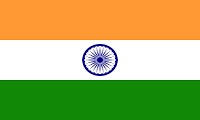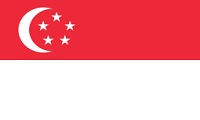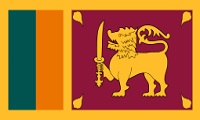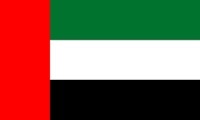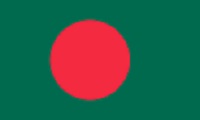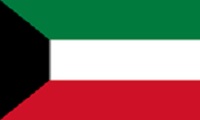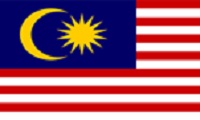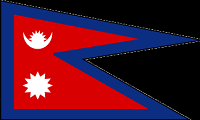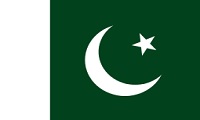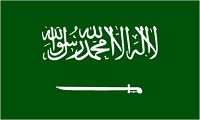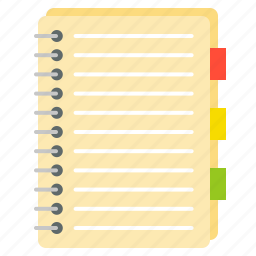Parent organisation
Silver zone foundation.
About
The ISSO is a test of competence and proficiency in history, geography and civics.
Syllabus
Class 1-
CLASS : 1 Our Body, Our School, Family, Home and Neighbourhood, Clothes, Food, School, Festivals and Celebrations, Plants Around Us, Animals Around Us, People Who Help Us, Our Earth and Sky, Air, Water, Weather and Seasons, Good Habits and Manners, Good and Bad Touch, Safety Rules, Transport and Means of Communication
Class 2-
Our Body Parts, Family and Neighbourhood, Our School, Our Helpers, Our Country, Food, Festivals, Places of worship, Healthy Habits, Clothes and Shelter, Good and Bad Touch, Plants and Animals Around Us, Environment, Direction and Time, Weather and Seasons, Land, Air and Water, Earth and Universe, Transport and Communication, Safety Rules, Famous Historical Monuments in India.
Class 3-
The Universe, The Earth, Learning about Directions, Globe and Map, Continents and Oceans, Our Environment, The Air, The Water, Seasons, Our Basic Needs (Food, Clothes and Shelter), Our Festivals, Transport and Communication, Occupations, Our Country (Basic features, Government, National Symbols, National Flag and Anthem), Important Metropolis (Delhi, Mumbai, Chennai, and Kolkata), Indian villages, Rules and Duties, Our Great Leaders, Early Men and Discovery of Fire, Beginning of Settled life .
Class 4-
Our Country India: its Landscape and People, The Himalayan Region, The Indo-Gangetic Plain, The Thar Desert, The Peninsular Plateau, The Coastal Plains and Islands, The Climate of India, The Resources of India: Water Resources, Mineral Resources, Energy Resources, Soil, Natural Vegetation and Forests, Agriculture and Livestock, Important Industries of India, Transport and Communication, Our Heritage, Our National Symbols, Our Government, Public Services, Our Rights and Duties, Great Achievers of India.
Class 5-
- The Earth: Rotation and Revolution, Realm of the Earth, Latitude and Longitude, Major Landforms, Oceans and Rivers •Maps and Globes •Weather and Climatic Zones: The Equatorial Climate, Desert Climate, Frigid Zone •Grasslands •Pollution and Conservation of Environment •Natural Disasters and Mitigation •Transports and Communications •Towards Growing Knowledge: Inventions and Discoveries, Living Healthy Life •Independence Movement of India: Arrival of British, Revolt of 1857,Freedom Struggle •Independent India and its Structure of Government •The UNO and its Organisations •India and United Nations •Other Regional Organisations •World Heritage Sites in India •Our Great Leaders and Achievers •Dates of International Importance.
Class 6-
- History •When, where and how •The earliest societies •The first farmers and herders •The first cities •Different ways of life •Early states •New ideas •The first empire •Life in towns and villages •Contact with distant lands •Political developments •Culture and science
- Geography •Planet : Earth in the solar system •Globe : The model of the earth, latitudes and longitudes; motions of the earth, rotation and revolution. •Maps : Essential components of maps distance, directions and symbols. •Four realms of the earth : Lithosphere, hydrosphere, atmosphere and biosphere : continents and oceans.
- Major relief features of the earth. •India in the world : Physiographic divisions of India – mountains, plateaus and plains; climate; natural vegetation and wild life; need for their conservation.
- Social and Political Life •Diversity •Government •Local Government: Both Urban and Rural •Panchayati Raj
- Making a Living •Rural Livelihoods •Urban Livelihoods
Class 7-
- History : • Where, When and How • New Kings and Kingdoms • The Sultans of Delhi • The Creation of An Empire • Architecture as Power: Forts and Sacred Places • Towns, Traders and Craftsmen • Social Change: Mobile and settled communities • Popular Beliefs and Religious Debates • The Flowering of Regional Cultures • New Political Formations in the Eighteenth Century
- Geography : • Environment in its totality: natural and human environment • Natural Environment: land – interior of the earth, rocks and minerals; earth movements and major land forms •Air – composition, structure of the atmosphere, elements of weather and climate – temperature, pressure, moisture and wind •Water – fresh and saline, distribution of major water bodies, ocean waters and their circulation •Natural vegetation and wild life •Human Environment: settlement, transport and communication •Human – Environment Interaction: life in desert regions – Sahara and Ladakh; life in tropical and subtropical regions – Amazon and Ganga-Brahmaputra; life in temperate regions – Prairies and Veldt
- Social and Political Life: •Democracy: Historical as well as the key features that structure a democracy •Institutional Representation of Democracy: Universal Adult Franchise; Elections; Political parties and Coalition Governments •State Government: Its working and functioning •Understanding Media: Media and Democracy; Advertising •Unpacking Gender: Social Aspects; Economic Aspects •Markets Around Us: Retail markets; Wholesale markets; People’s access to market
Class 8-
- History: • Where, When, How • The Establishment of Company Power • Rural Life and Society: Colonial agrarian policies; their effect on peasants and landlords; Growth of commercial crops; Peasant Revolution • Colonialism and Tribal Societies: Chota nagpur and North-East; Changes within tribal economies and societies in the nineteenth century Tribal revolts- focus on Birsa Munda • Crafts and Industries: Decline of handicrafts in the nineteenth century; Brief reference to growth of industries in the twentieth century • The Revolt of 1857-58 • Education and British rule • Women and reform • Challenging the Caste System • Colonialism and Urban Change • Changes in the Arts: Painting, Literature, Architecture • The Nationalist Movement • India after Independence • Air – composition, structure of the atmosphere, elements of weather and climate – temperature, pressure, moisture and wind • Water – fresh and saline, distribution of major water bodies, ocean waters and their circulation • Natural vegetation and wild life • Human Environment: settlement, transport and communication • Human – Environment Interaction: life in desert regions – Sahara and Ladakh; life in tropical and subtropical regions – Amazon and Ganga-Brahmaputra; life in temperate regions – Prairies and Veldt 3. Social and Political Life: • Democracy: Historical as well as the key features that structure a democracy • Institutional Representation of Democracy: Universal Adult Franchise; Elections; Political parties and Coalition Governments • State Government: Its working and functioning • Understanding Media: Media and Democracy; Advertising • Unpacking Gender: Social Aspects; Economic Aspects • Markets Around Us: Retail markets; Wholesale markets; People’s access to market
- Geography: • Resources: resources and their types – natural and human • Natural resources: their distribution, utilisation and conservation, land and soil, water, natural vegetation, wildlife, mineral and power resources (world patterns with special reference to India) • Agriculture: types of farming, major crops, food crops, fibres, beverages, agricultural development • Industries: classification of industries based on size, raw material, ownership; major industries and distribution; infrastructure and development; Iron and Steel (a comparative study of Jamshedpur and a centre in USA e.g., Detroit); Textile Industry (Ahmedabad and Osaka);Information Technology (Bangalore and Silicon Valley) • Human Resources – composition, population change, distribution and density
- Rule of Law and Social Justice: • The Constitution • Parliamentary Government • The Judiciary • Social Justice and the Marginalised • Economic Presence of the Government
Class 9-
- India and the Contemporary World: • French Revolution • Russian Revolution • Rise of Nazism
- Economies and Livelihoods: • Pastoralists in the modern world • Forest society and colonialism • Farmers and peasants
- Culture, Identity and Society: • Sports and politics • Clothes and cultures
- India - Land and the People: • India • Drainage • Climate • Natural Vegetation • Wildlife • Population E. Democratic Politics: • Democracy • Democracy in India • Electoral Politics in Democracy • Institutions of parliamentary democracy • Citizens’ rights in democracy
- Understanding Economic Development: • Three factors of production • People as Resource • Poverty as a challenge facing India • Food Security: G. Disaster Management
- Introduction to Disaster Management • Common Hazards - Prevention and Mitigation: • Ma made disasters - Nuclear, Biological and Chemical • Community Based Disaster Management
Class 10-
CLASS : 10 (SYLLABUS & SAMPLE QUESTIONS)
- India and the Contemporary World: • Nationalism in Europe • Nationalist Movement in Indo China • Nationalism in India
- Economies and Livelihoods: • Industrialization 1850s - 1950s • Urbanization and Urban Lives • Trade and Globalization
- Culture, Identity and Society: • Print culture and nationalism • History of the novel
- India - Resources and their Development: • Resources • Natural Resources • Forest and Wild Life Resources • Water Resources • Agriculture • Mineral Resources • Power Resources • Manufacturing Industrie • Transport, Communication and Trade
- Democratic Politics: • Power sharing mechanisms in democracy • Working of Democracy • Competition and contestations in democracy • Outcomes of Democracy • Challenges to Democracy
- Understanding Economic Development: • The Story of Development • Sectors of the Indian Economy • Money and Credit • Globalisation • Consumer Awareness
- Disaster Management
- Tsunami • Safer Construction Practices • Survival Skills • Alternate Communication systems during disasters • Sharing Responsibility
Eligibility Criteria
Participant must be a student of class 1-10.
Free Sample Paper
http://www.silverzone.org/Files/Syl_Sam_Papers/isso/1.pdf
http://www.silverzone.org/Files/Syl_Sam_Papers/isso/2.pdf
http://www.silverzone.org/Files/Syl_Sam_Papers/isso/3.pdf
http://www.silverzone.org/Files/Syl_Sam_Papers/isso/4.pdf
http://www.silverzone.org/Files/Syl_Sam_Papers/isso/5.pdf
http://www.silverzone.org/Files/Syl_Sam_Papers/isso/6.pdf
http://www.silverzone.org/Files/Syl_Sam_Papers/isso/7.pdf
http://www.silverzone.org/Files/Syl_Sam_Papers/isso/8.pdf
http://www.silverzone.org/Files/Syl_Sam_Papers/isso/9.pdf
http://www.silverzone.org/Files/Syl_Sam_Papers/isso/10.pdf
Registration Process
http://www.silverzone.org/Files/Downloads/Rar/iSSORegistrationForm.rar
Important Dates
Date of examination- 27th November/ 19th December 2018
Last date for registration - 30th September
Benefits, Awards & Scholarships
- First rank- Cash prize of 10,000 along with winner’s trophy
- Second rank- Cash prize of 7500 along with winner’s trophy
- Third rank – Cash prize of 5000 along with winner’s trophy
- 4th – 10th rank – a wristwatch
- 11th – 25th rank – attractive gifts
- 26th – 500th – special achievement certificate.
- All State 1st, 2nd, 3rd rank holders will be awarded with exciting prizes.
- Class toppers will be awarded by gold, silver and bronze medals respectively
All participants will be awarded with participation certificate.










